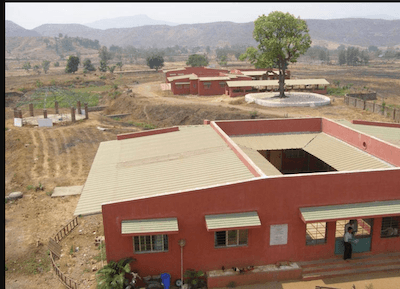SUMMARY
This is AI generated summarization, which may have errors. For context, always refer to the full article.

MANILA, Philippines – It was another regular day of 1998 in Mumbai, India, for Bharat Vatwani and his wife Smitha. They were having their cup of tea and some snacks when they saw a man across the road who stood out from the crowd.
The man had an odd posture and had exaggerated, repetitive actions. The couple, both psychiatrists, immediately knew the man had schizophrenia, a mental disorder.
“At that point in time we didn’t think of doing anything for him, to be very honest,” Vatwani admitted.
“In India, about 13% of the population is afflicted with some mental illness and many of them are just roaming, wandering around”
– Bharat Vatwani, 2018 Ramon Magsaysay awardee
But then the man suddenly took an empty coconut shell, dipped it in a canal, and drank water from the gutter. This prompted the couple to cross the street and help the man.
They asked him to come with them. After spending some time with him, the couple realized the man held a degree in medical technology. He was also able to provide them a home address.
“There was no whatsapp, internet, whatever then, so we sent a letter to his house, to the address which he had given, and his father came rushing down,” Vatwani said.
“That made us think that there was nobody dealing with the cause of the wandering mentally ill. And then one case, second case, third case, then the cases went on and on and on,” he added.
And it did go on. Over 7,000 times.
From serendipity to strategy
The chance encounter in 1998 eventually led to the couple establishing the Shraddha Rehabilitation Foundation.
They started with a two-room treatment facility, treating few people at a time. With the help of some donors, the facility grew.
Now, they are able to treat over 120 patients rescued from roads.
“So many of them. In India, about 13% of the population is afflicted with some mental illness and many of them are just roaming, wandering around,” Vatwani said.
Unlike in typical congested, dim, and cold mental health treatment facilities, where patients are locked up, patients at Shraddha are free to roam around.
They engage in a range of productive activities, like planting rice and vegetables and taking care of cattle.
Patients are also given special attention by psychiatric counselors and care providers.
“This approach is much more humanistic than other types of treatments,” Vatwani said.
The foundation devotes all resources to the mentally ill that are shunned by people in the streets.

Vatwani is proud of this strategy that has a high success rate.
“We are able to reunite people with their families 95% of the time,” he said.
Apart from the resources they have now and their treatment approach, Vatwani said being able to help would not have been possible without the community’s involvement and word of mouth.
“I think people should be driven by emotions, not by logical thought”
– Bharat Vatwani, 2018 Ramon Magsaysay awardee
Community engagement
The success of their strategy banks on the compassion of volunteers and the community.
He said they have to constantly prove to people that treatment is possible. This hope, he says, creates a ripple effect and spurs people to get up from their seats and take action.
“Because we are reuniting the patient [with his family] and the patient is reunited in a much better condition psychiatrically, there is immediate word of mouth. If he has left the village in a psychiatrically-disturbed state of mind and he comes back in the village in a psychiatrically-good state of mind, then the response is terrific,” he said.
While he recognizes that it is easy now for technology like smartphones and social media to get the message out, Vatwani said it is not enough.
He encourages people to not just take photos and videos.
“Take that mentally-ill person. Feed him. Call authorities,” he said.
When asked about how other countries like the Philippines can replicate the change that he has done to India, he did not elaborate on a grand structural or government plan. He simply advised people to follow one’s heart.
“I think people should be driven by emotions, not by logical thought,” he said. – Rappler.com
Read other 2018 Ramon Magsaysay profiles:
Add a comment
How does this make you feel?
There are no comments yet. Add your comment to start the conversation.